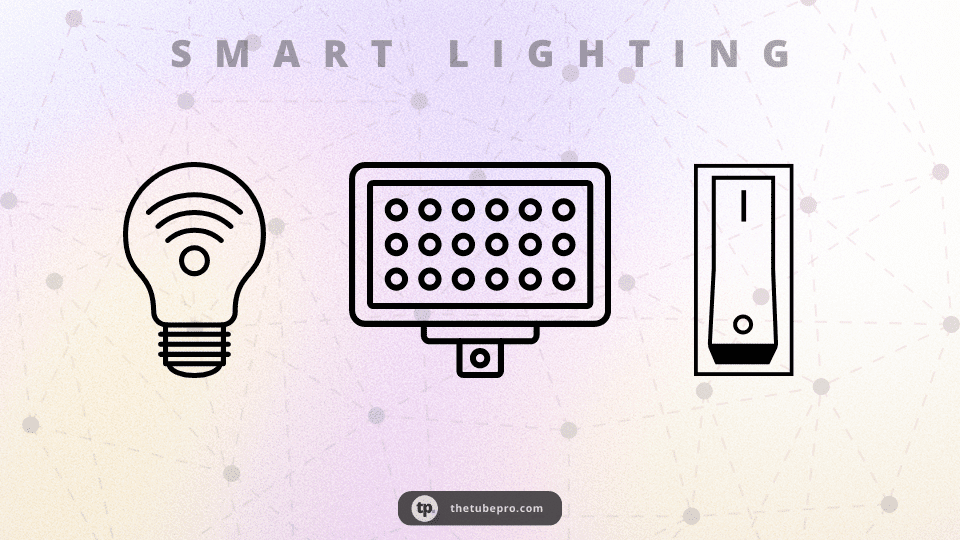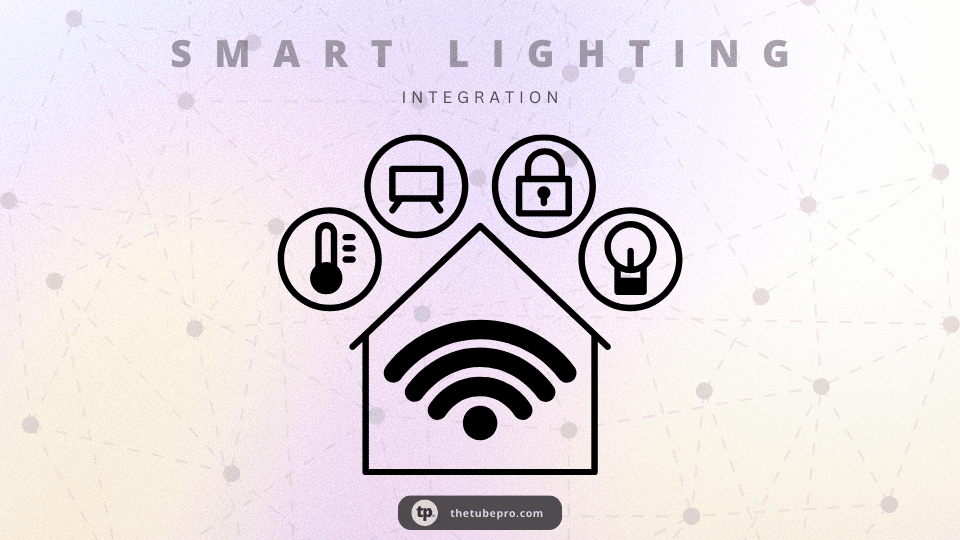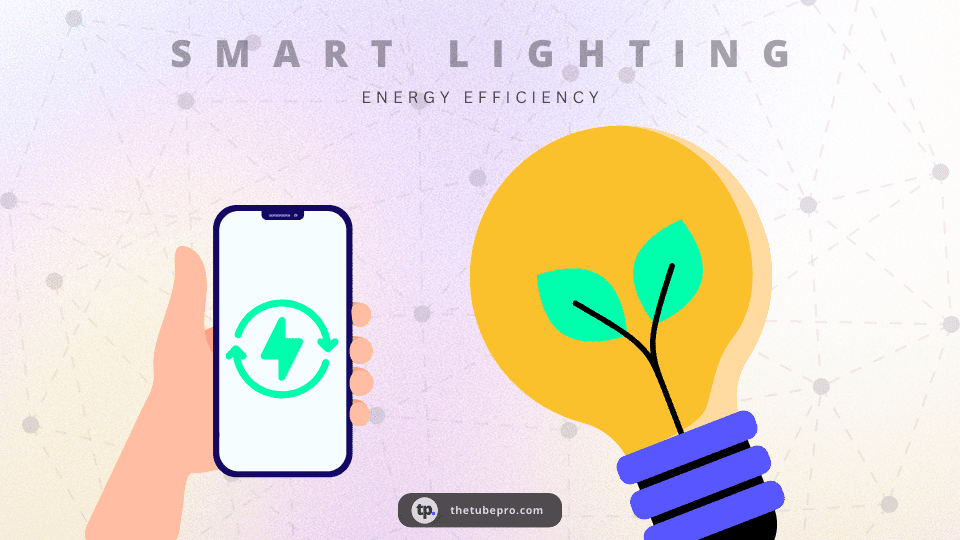Smart lighting has emerged as a game-changer in the world of home lighting, offering a myriad of benefits that go beyond traditional lighting solutions. With smart lighting, you have the power to transform your space into a modern and energy-efficient haven.

- Benefits of Smart Lighting
- Types of Smart Lighting Products
- Smart Switches
- Smart Lights
- Installation and Setup of Smart Lighting
- Integrating Smart Lighting with Other Smart Home Devices
- Energy Efficiency and Cost Savings with Smart Lighting
- Smart Lighting Control Options and Customization
- Troubleshooting Common Smart Lighting Issues
- Future Trends in Smart Lighting Technology
- Conclusion
Benefits of Smart Lighting
Smart lighting brings a multitude of benefits to homeowners, making it a popular choice for those looking to upgrade their lighting systems. One of the key advantages of smart lighting is its ability to enhance convenience.
With smart bulbs, switches, and lights, you can control your home’s lighting remotely using your smartphone or voice commands. This means you can turn lights on or off, adjust brightness, and even change colors from anywhere in the world.
Additionally, smart lighting offers improved energy efficiency, allowing you to reduce your carbon footprint and lower your electricity bills. By utilizing features such as motion sensors and timers, you can ensure that your lights are only on when needed, saving both energy and money. Moreover, smart lighting systems often come with advanced customization options, allowing you to create the perfect ambiance for any occasion.
Types of Smart Lighting Products
When it comes to smart lighting, there is a wide range of products available to suit various preferences and needs. The three main types of smart lighting products are smart bulbs, smart switches, and smart lights.

Smart Bulbs
Smart bulbs are perhaps the most well-known and versatile smart lighting product on the market. These bulbs can be controlled wirelessly using a smartphone app or a voice assistant, such as Amazon Alexa or Google Assistant. Smart bulbs come in a variety of colors and intensities, allowing you to create the perfect atmosphere for any setting.
They can also be programmed to turn on or off at specific times or in response to certain triggers, such as motion detection.
One of the major benefits of smart bulbs is their energy efficiency. Unlike traditional incandescent bulbs, smart bulbs use LED technology, which consumes significantly less energy while providing the same level of brightness.
This not only helps reduce your electricity bills but also contributes to a greener environment.
How Do Smart Bulbs Work?
Smart bulbs connect to your home’s Wi-Fi network, allowing you to control them remotely through an app or a voice assistant. These bulbs typically require a hub or a bridge to establish a connection between the bulbs and your smartphone or voice assistant. Once connected, you can control the bulbs individually or group them together to create lighting scenes or routines.
Smart bulbs also offer the convenience of dimming capabilities, allowing you to adjust the brightness levels according to your preference. Some advanced smart bulbs even have color-changing capabilities, enabling you to create vibrant and dynamic lighting effects in your home.
Do Smart Bulbs Use Electricity When Off?
One common concern among homeowners is whether smart bulbs consume electricity when turned off. The good news is that smart bulbs, when turned off, consume very minimal or no electricity at all. Unlike traditional bulbs that continue to draw power even when switched off, smart bulbs are designed to be energy-efficient and do not draw any significant power when not in use.
How Long Do Smart Bulbs Last?
Another important factor to consider when investing in smart bulbs is their lifespan. Traditional incandescent bulbs have a relatively short lifespan and need frequent replacement. However, smart bulbs, particularly those using LED technology, have a significantly longer lifespan. On average, a smart bulb can last anywhere from 15,000 to 25,000 hours, depending on the brand and usage. This translates to several years of use before needing to replace the bulb.
Smart Switches
Smart switches offer an alternative solution for smart lighting control. Instead of replacing the bulbs, smart switches replace your existing traditional switches, making them an ideal choice for those who prefer a more permanent and integrated smart lighting solution. Smart switches allow you to control your lights using both manual switches and smart home automation systems.
One of the key benefits of smart switches is their compatibility with a wide range of light fixtures, including those with multiple bulbs. This means you can control an entire room’s lighting with just one switch, eliminating the need to replace multiple bulbs.
Smart switches also offer the convenience of controlling your lights even when the physical switch is turned off.
How Do Smart Bulbs Work with Switches?
Smart switches work by replacing your existing traditional switches with their smart counterparts. These switches are connected to your home’s Wi-Fi network, allowing you to control them remotely using a smartphone app or voice commands.
When using smart switches, the bulbs themselves do not need to be smart bulbs, as the intelligence lies within the switch. This provides a cost-effective solution for those who want to upgrade their lighting system without replacing all their bulbs.
Smart switches often come with additional features such as dimming capabilities and scheduling options, allowing you to customize your lighting experience even further. Some smart switches also have built-in motion sensors, which can automatically turn the lights on or off based on movement detection.
Smart Lights
Smart lights, also known as smart light strips or smart light panels, are a more versatile and creative option for smart lighting enthusiasts. These lights come in various forms, such as flexible strips or modular panels, and can be easily installed in different areas of your home. Smart lights offer endless possibilities when it comes to creating unique lighting effects and adding a touch of elegance to your space.
One of the key features of smart lights is their ability to change colors and create dynamic lighting scenes. With smart lights, you can choose from millions of colors and customize the intensity and patterns to suit your mood or occasion.
Whether you want to create a cozy ambiance for a movie night or a vibrant atmosphere for a party, smart lights allow you to easily transform your space with just a few taps on your smartphone.
How to Choose the Right Smart Lighting for Your Home
With the multitude of smart lighting options available, choosing the right one for your home can be a daunting task. To help you make an informed decision, consider the following factors:
- Compatibility: Ensure that the smart lighting products you choose are compatible with your existing smart home ecosystem, such as your voice assistant or smart home hub.
- Functionality: Determine the specific features and capabilities you need, such as color-changing abilities, dimming options, or motion sensors.
- Installation: Consider the ease of installation and whether you prefer a solution that requires replacing bulbs or switches, or if you prefer a more flexible option like smart lights.
- Budget: Set a budget for your smart lighting project and choose products that fit within your financial constraints.
By considering these factors, you can narrow down your options and find the perfect smart lighting solution for your home.
Installation and Setup of Smart Lighting

Once you have chosen your smart lighting products, it’s time to install and set them up in your home. The installation process will vary depending on the type of smart lighting you have chosen. Here are some general steps to guide you through the installation process:
- Prepare the necessary tools: Before you begin the installation, gather the necessary tools such as a screwdriver, wire strippers, and a smartphone or tablet with the corresponding smart lighting app.
- Turn off the power: Before working with any electrical wiring, make sure to turn off the power at the circuit breaker or fuse box to ensure your safety.
- Replace bulbs or switches: If you have chosen smart bulbs or switches, follow the manufacturer’s instructions to replace your existing bulbs or switches with the smart ones. Ensure that the wiring is properly connected and secure.
- Connect to the Wi-Fi network: Follow the instructions provided by the manufacturer to connect your smart lighting products to your home’s Wi-Fi network. This typically involves downloading the corresponding app, creating an account, and following the on-screen prompts.
- Sync with voice assistant or smart home hub: If you are using a voice assistant or a smart home hub, follow the instructions provided to sync your smart lighting products with the respective devices. This will allow you to control your lights using voice commands or through your smart home automation system.
Once the installation and setup process is complete, you can start enjoying the convenience and benefits of smart lighting in your home.
Integrating Smart Lighting with Other Smart Home Devices
One of the major advantages of smart lighting is its ability to integrate seamlessly with other smart home devices, creating a truly connected and automated living environment. By integrating your smart lighting with other devices such as smart thermostats, door locks, or security systems, you can enhance the functionality and convenience of your smart home ecosystem.

For example, you can set up automation routines that turn on specific lights when you arrive home or when certain events occur. You can also synchronize your smart lighting with your music or home theater system to create immersive lighting effects that match the mood or tempo of the music or movie.
Integrating your smart lighting with other devices typically involves using a smart home hub or a compatible smart home platform. These hubs or platforms act as a central control point for all your smart devices, allowing you to create customized scenes, routines, and automation rules.
Energy Efficiency and Cost Savings with Smart Lighting
One of the key benefits of smart lighting is its energy efficiency, which can result in significant cost savings over time. Traditional incandescent bulbs waste a large amount of energy as heat, making them inefficient and costly to operate.
On the other hand, smart bulbs and LED lights consume significantly less energy while providing the same level of brightness.

Smart lighting systems also offer additional energy-saving features such as motion sensors and scheduling options. Motion sensors detect when a room is unoccupied and automatically turn off the lights, ensuring that energy is not wasted when it is not needed. Scheduling options allow you to set specific times for the lights to turn on or off, reducing unnecessary energy consumption.
By utilizing these energy-saving features, you can reduce your electricity bills and minimize your environmental impact. Additionally, many utility companies offer incentives or rebates for energy-efficient upgrades, which can further offset the cost of investing in smart lighting.
Smart Lighting Control Options and Customization
One of the key advantages of smart lighting is the level of control and customization it offers. With smart lighting, you have the power to create the perfect ambiance for any occasion, whether it’s a romantic dinner, a movie night, or a party.
Smart lighting systems typically come with a dedicated smartphone app that allows you to control your lights remotely. Through the app, you can turn lights on or off, adjust brightness levels, change colors, and create lighting scenes or routines. Some apps even offer advanced features such as dynamic lighting effects or the ability to sync your lights with music or movies.

In addition to smartphone control, smart lighting can also be controlled using voice commands through compatible voice assistants such as Amazon Alexa or Google Assistant. This hands-free control allows for even greater convenience and ease of use.
Moreover, smart lighting systems often offer integration with popular smart home platforms, allowing you to control your lights alongside other smart devices through a single interface. This level of integration and customization gives you endless possibilities to create a personalized and seamless smart home experience.
Troubleshooting Common Smart Lighting Issues
Like any technology, smart lighting systems can sometimes encounter issues or glitches. Here are some common problems you may encounter with smart lighting and potential solutions:
- Connection issues: If your smart lighting products are not connecting to your Wi-Fi network, ensure that you have entered the correct network credentials and that your Wi-Fi signal is strong enough. You may also need to restart your router or move your smart lighting products closer to the router.
- Unresponsive lights: If your smart lights are not responding to commands, check if they are properly connected to the power source. You may also need to reset the lights or the corresponding app.
- Interference with other devices: If you notice interference or flickering in your smart lights, it may be caused by other electronic devices nearby. Try moving the devices farther away from each other or using shielded cables to reduce interference.
- Compatibility issues: If you are experiencing compatibility issues with your smart lighting products and other smart home devices, ensure that all the devices are using the same communication protocols, such as Zigbee or Z-Wave. If necessary, consider using a smart home hub to bridge the compatibility gap.
If you encounter persistent issues with your smart lighting system, it is recommended to consult the manufacturer’s support resources or reach out to their customer support for further assistance.
Future Trends in Smart Lighting Technology
As technology continues to advance, the future of smart lighting looks promising. Here are some of the trends we can expect to see in the coming years:
- Increased integration: Smart lighting will become more integrated with other smart home devices, allowing for seamless automation and control of the entire living environment.
- Enhanced energy efficiency: Smart lighting systems will continue to improve their energy-saving capabilities, further reducing energy consumption and environmental impact.
- Expanded color options: With advancements in LED technology, smart lighting will offer an even wider range of color options and dynamic lighting effects.
- Artificial intelligence (AI) integration: AI-powered smart lighting systems will learn and adapt to users’ preferences, creating personalized lighting experiences based on individual habits and preferences.
- Wireless charging: Smart lighting fixtures may incorporate wireless charging capabilities, allowing users to charge their smartphones or other devices directly from the lights.
As these trends become a reality, smart lighting will continue to evolve and shape the way we illuminate our homes.
Conclusion
Smart lighting has revolutionized the way we illuminate our homes, offering a plethora of benefits and opportunities for customization. With smart bulbs, switches, and lights, you have the power to transform your home into a modern and energy-efficient space. From controlling your lights remotely to creating personalized lighting scenes, smart lighting allows you to enhance convenience, save energy, and create the perfect ambiance for any occasion.
By considering factors such as compatibility, functionality, installation, and budget, you can choose the right smart lighting solution for your home. Whether you opt for smart bulbs, switches, or lights, the installation process is relatively straightforward and can be done by following the manufacturer’s instructions.
Integrating smart lighting with other smart home devices further enhances the functionality and convenience of your living space. By creating automation routines and syncing your lights with other devices, you can create a truly connected and automated living environment.
With its energy-saving features, smart lighting not only helps reduce your electricity bills but also contributes to a greener and more sustainable planet.


